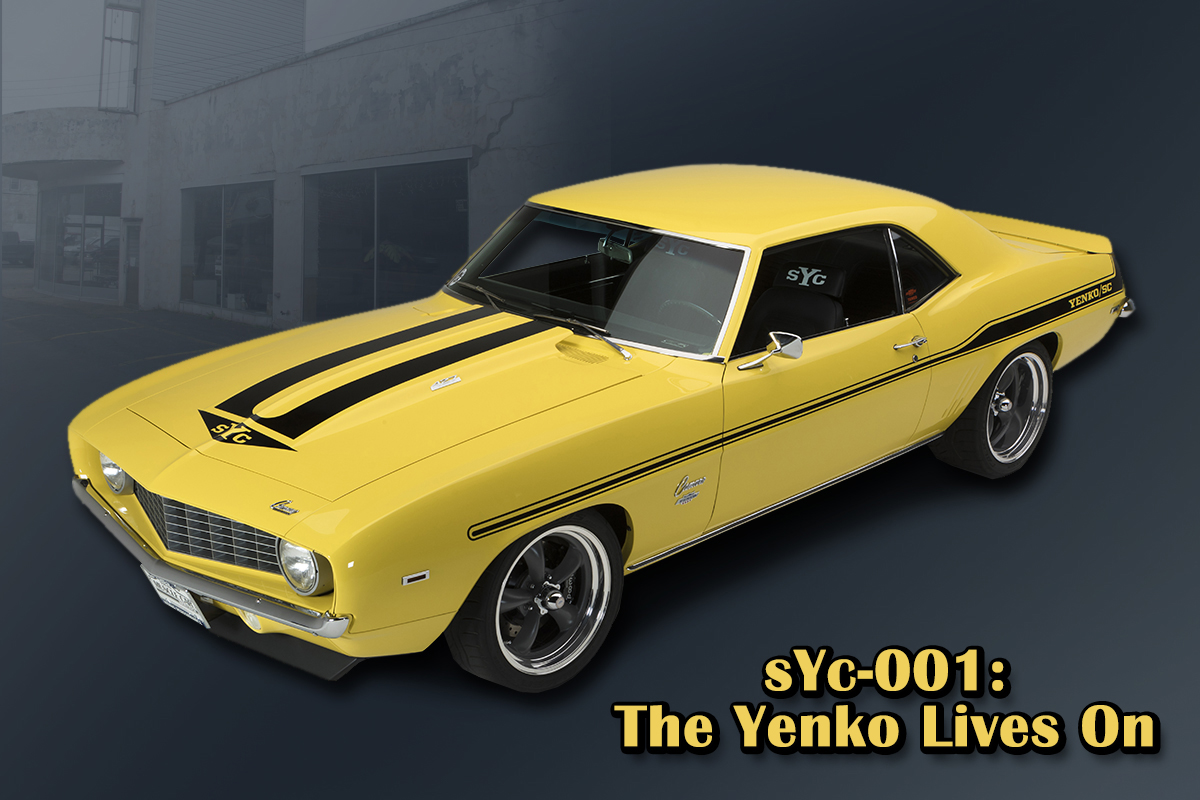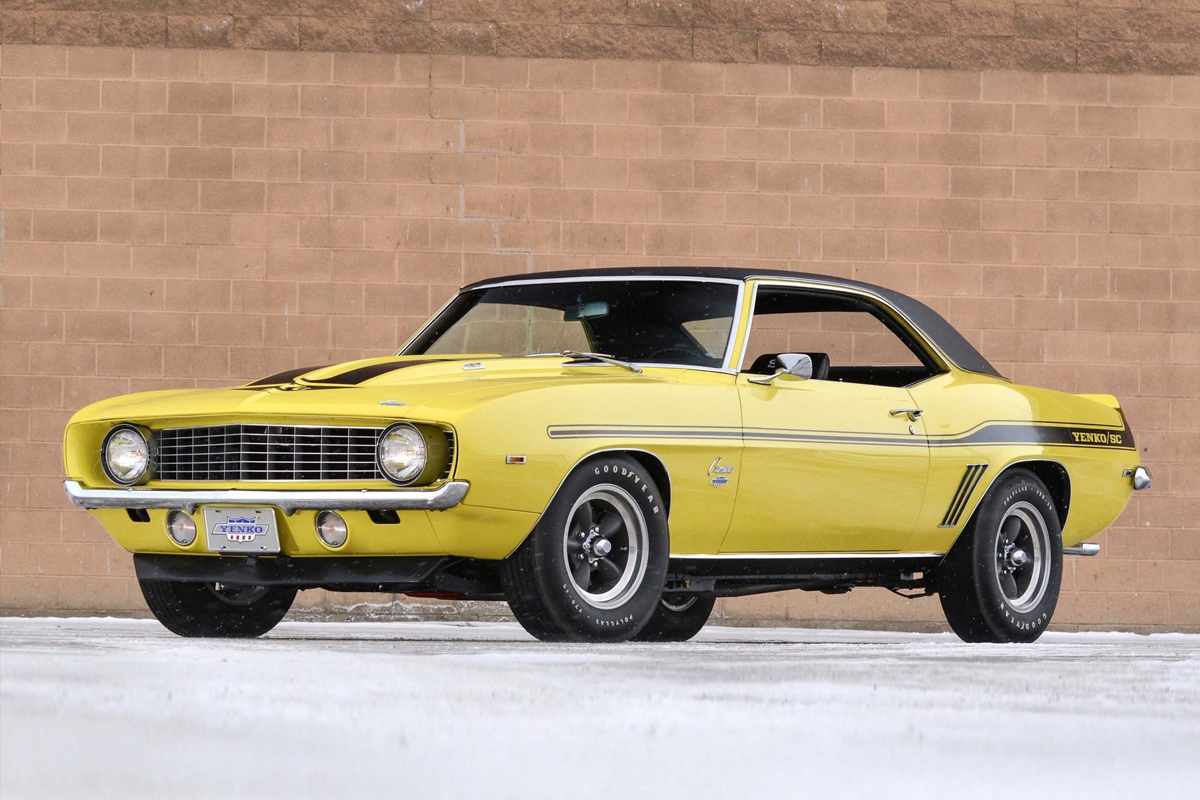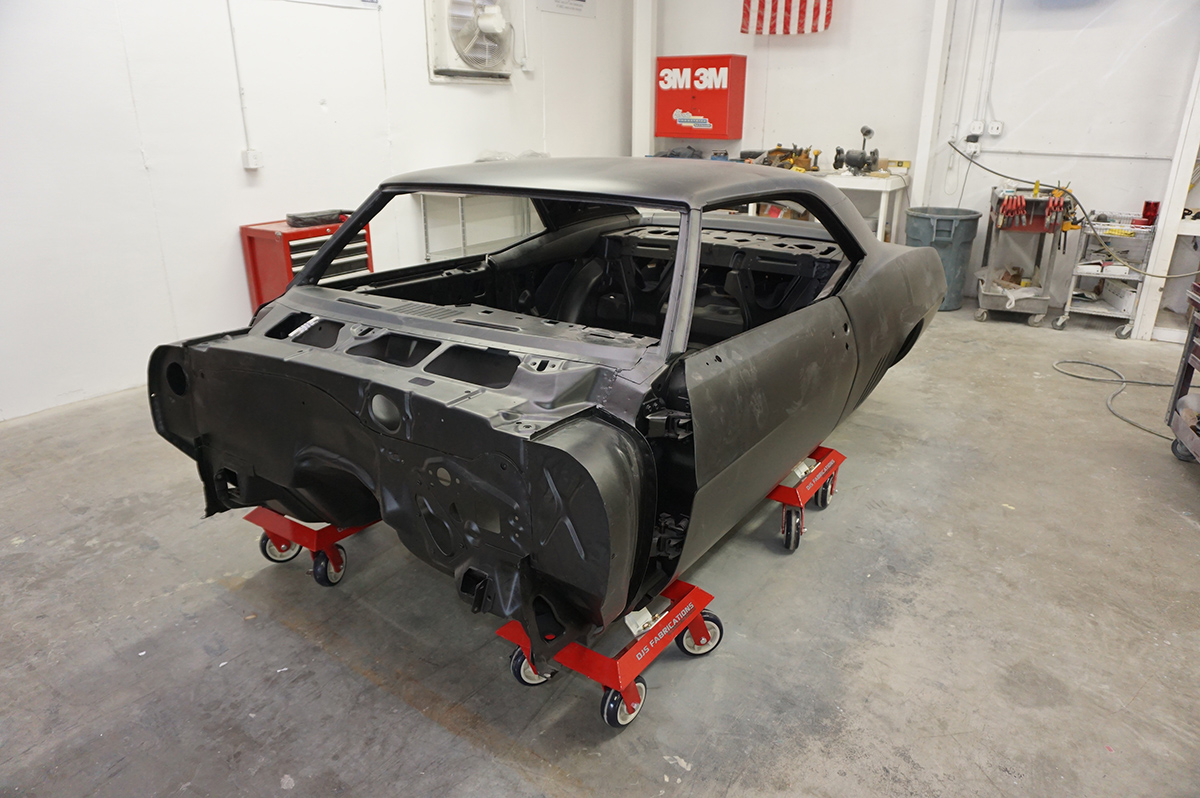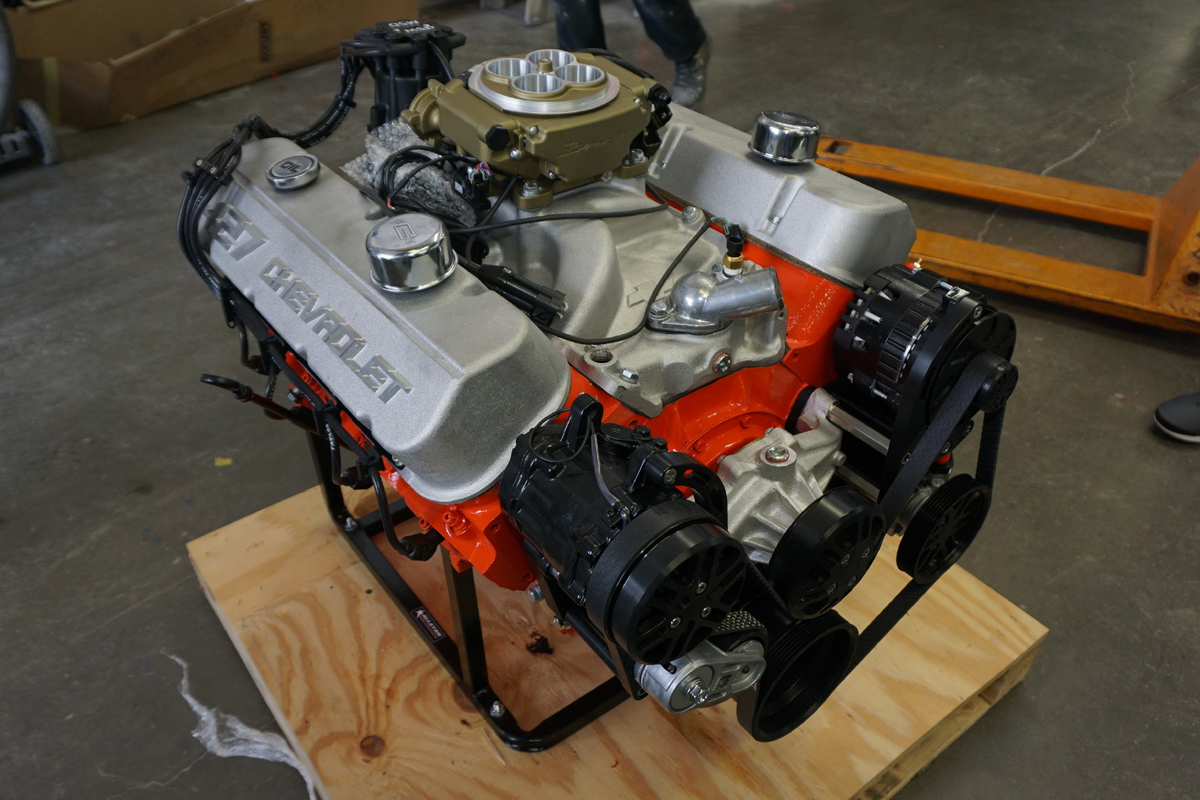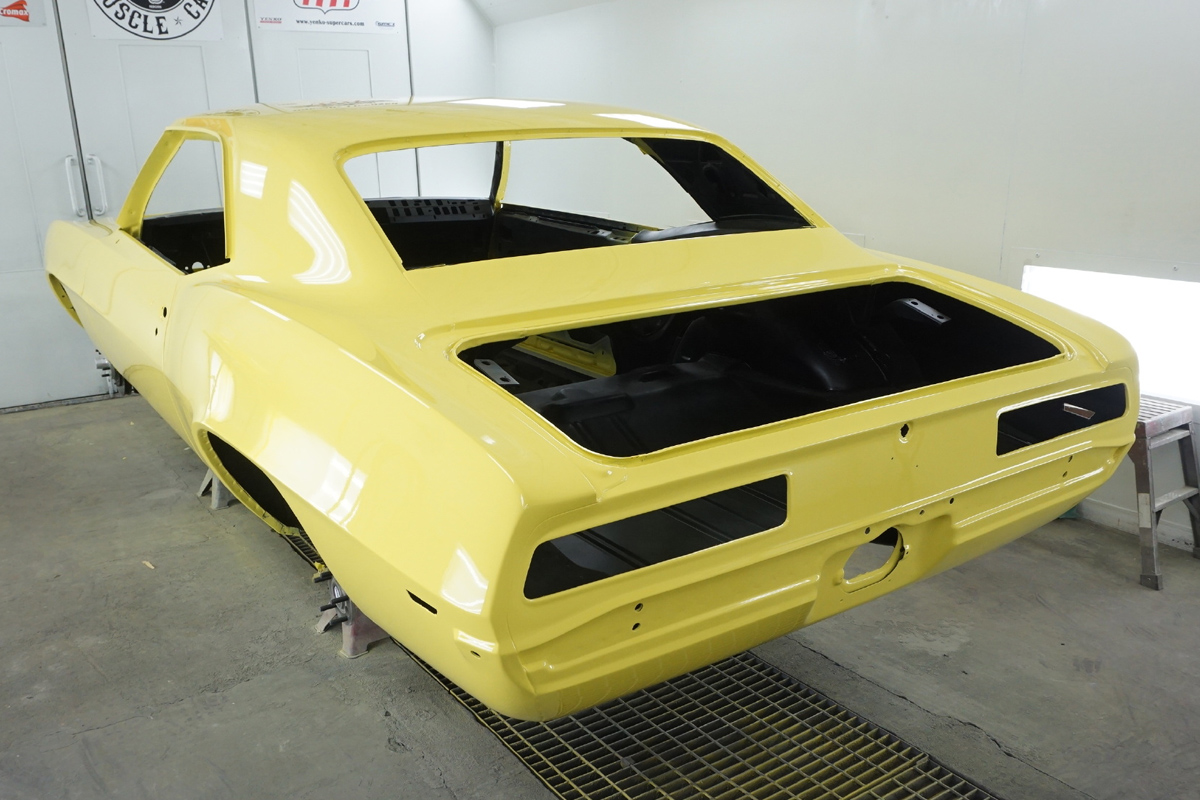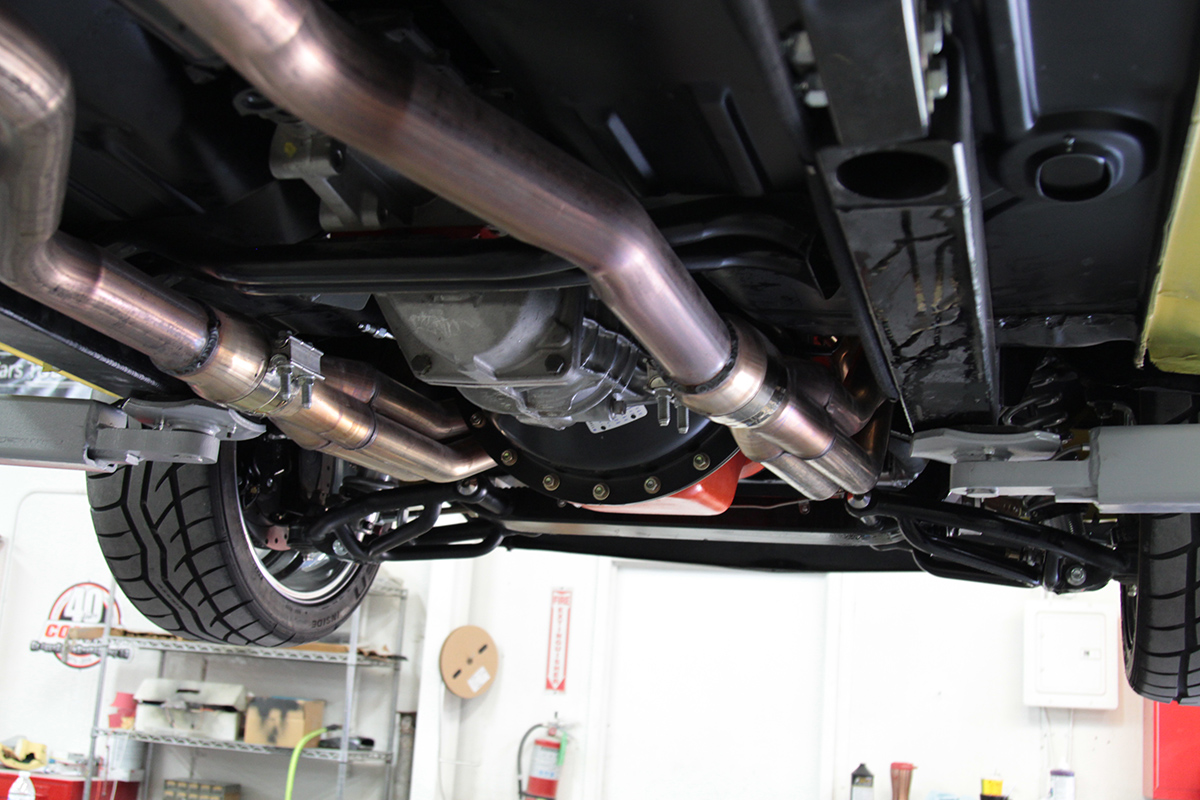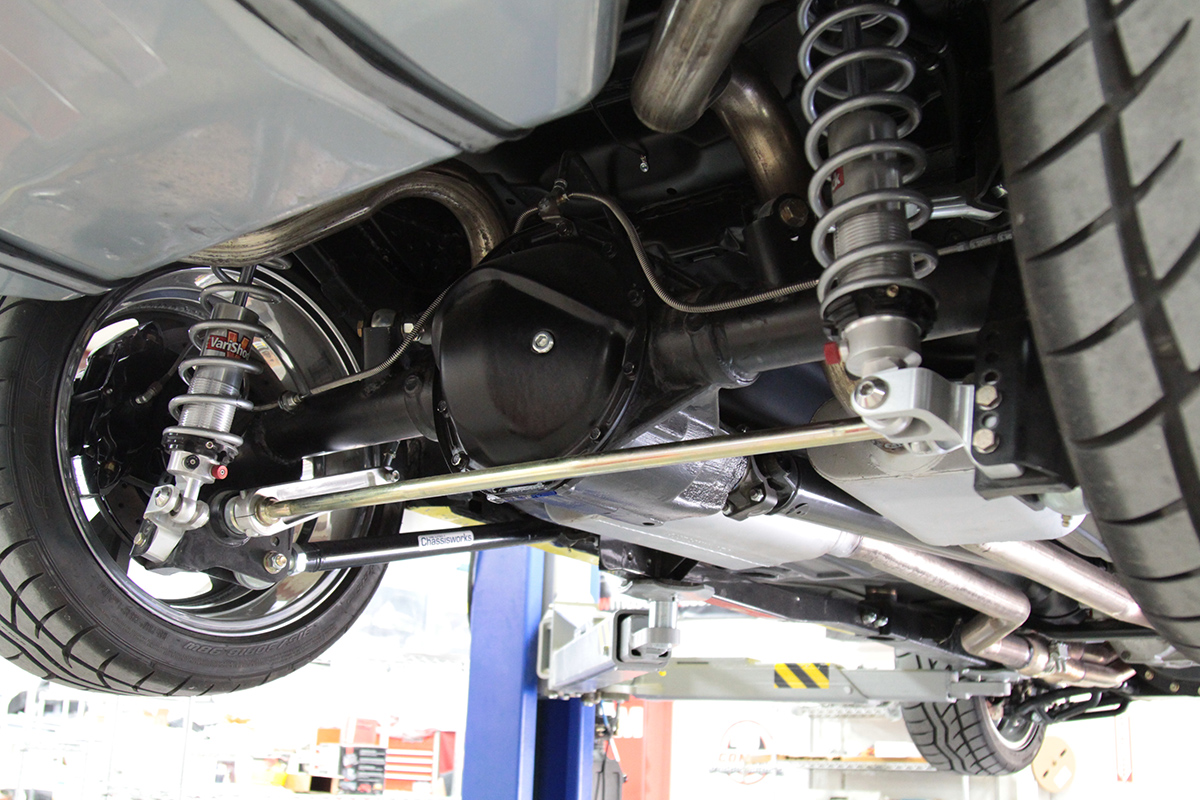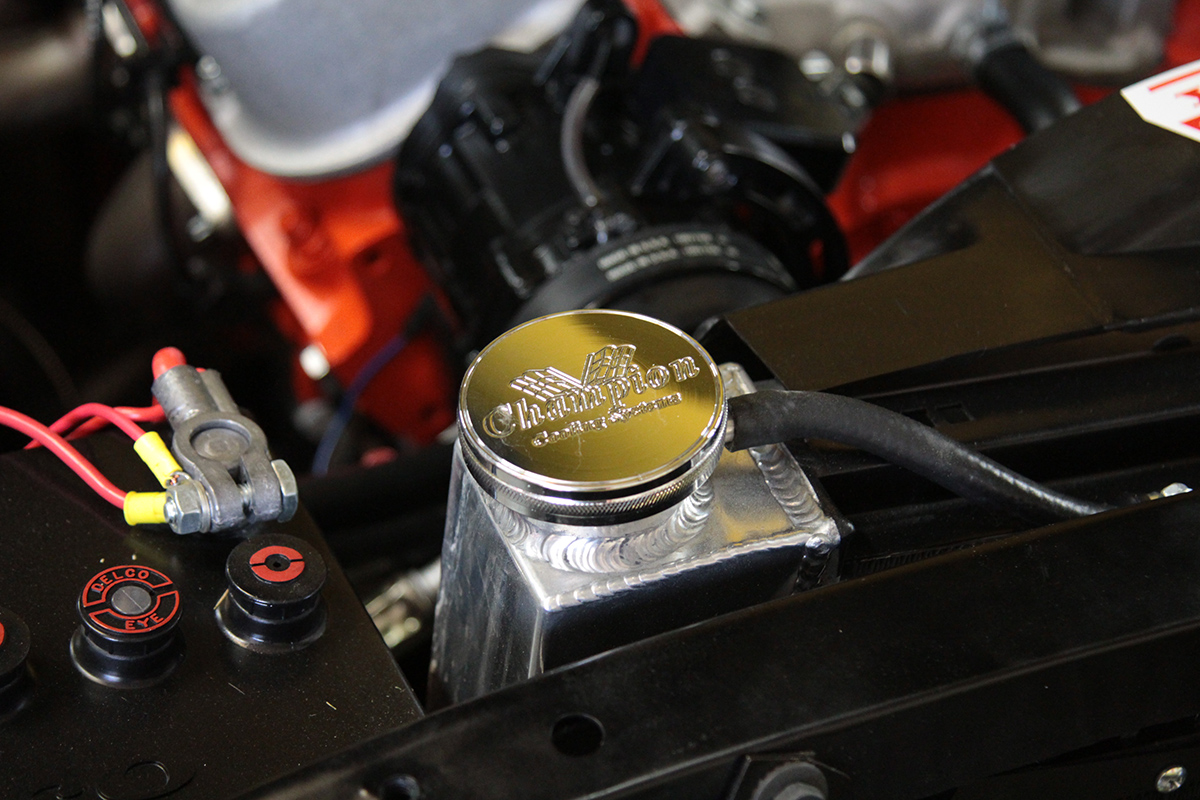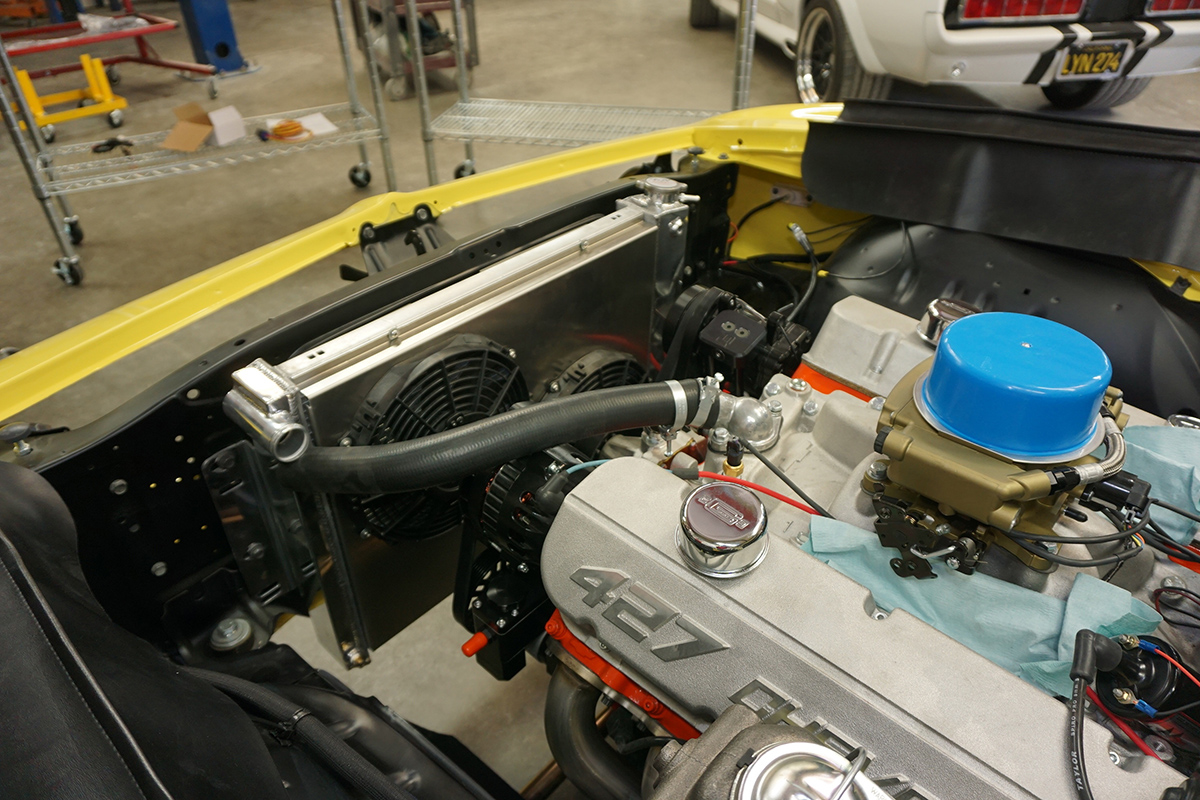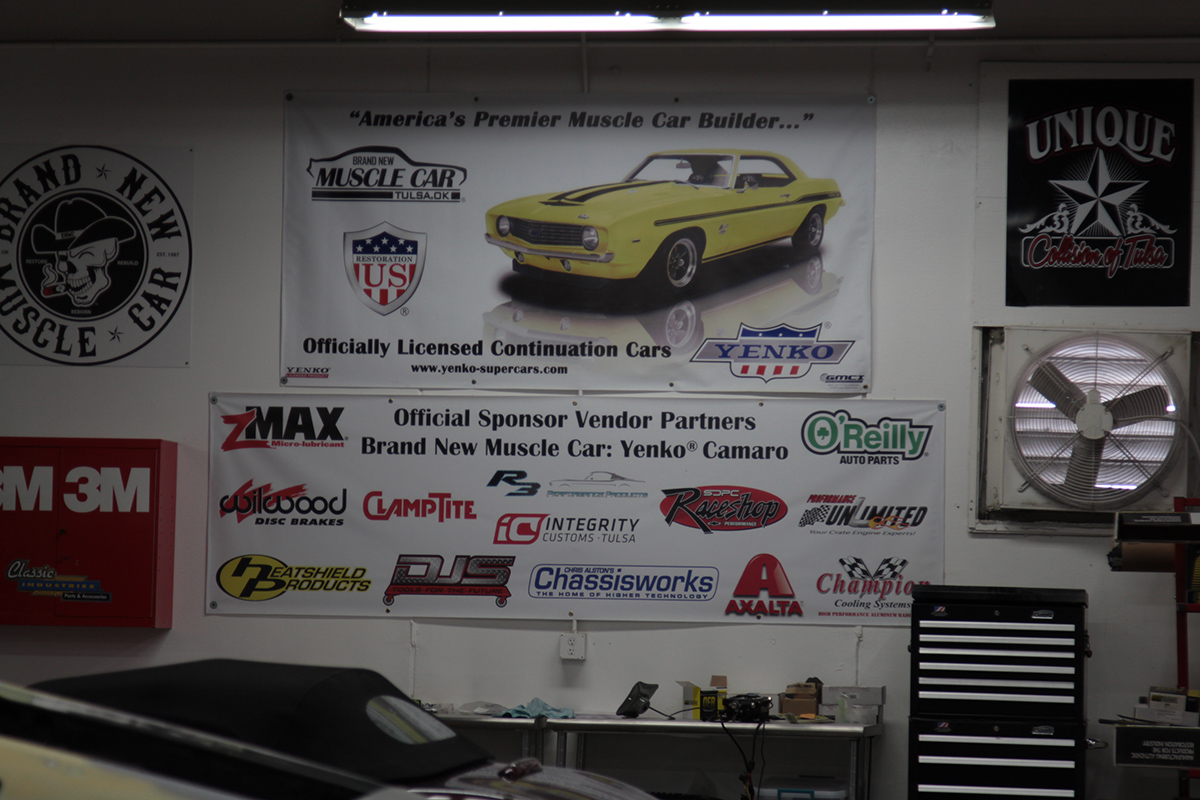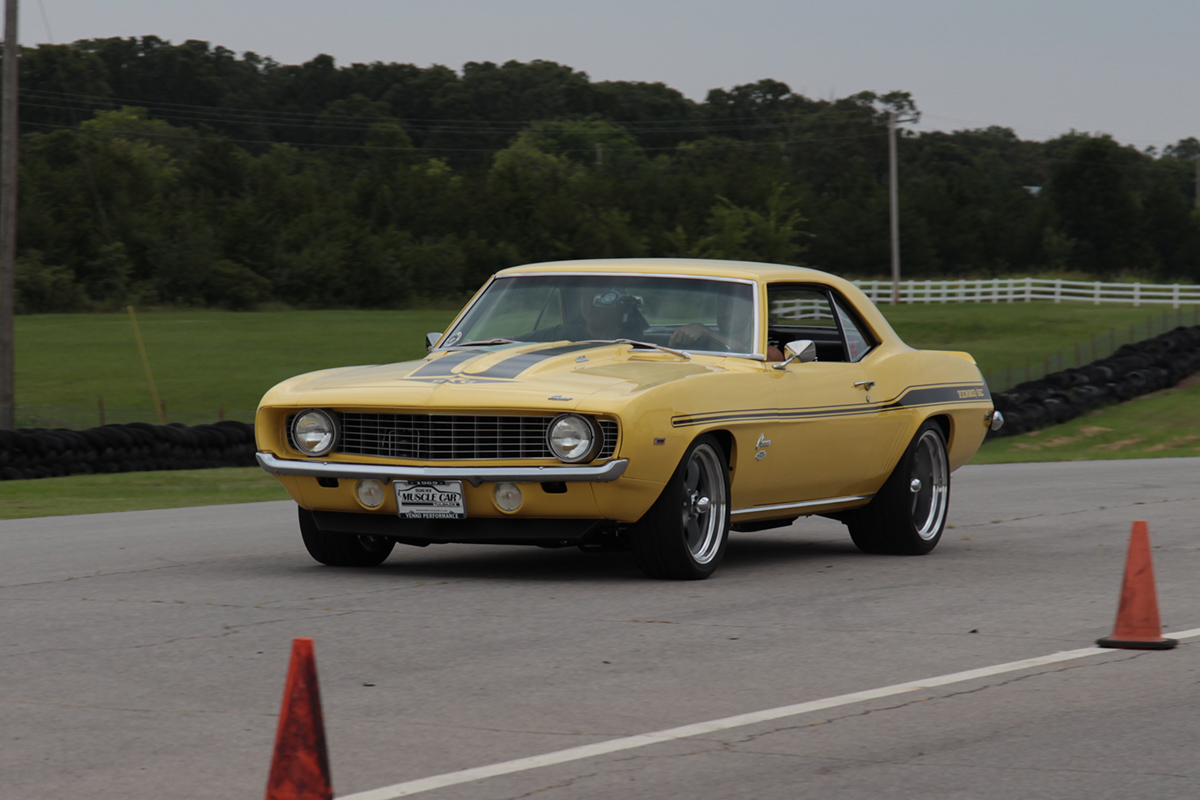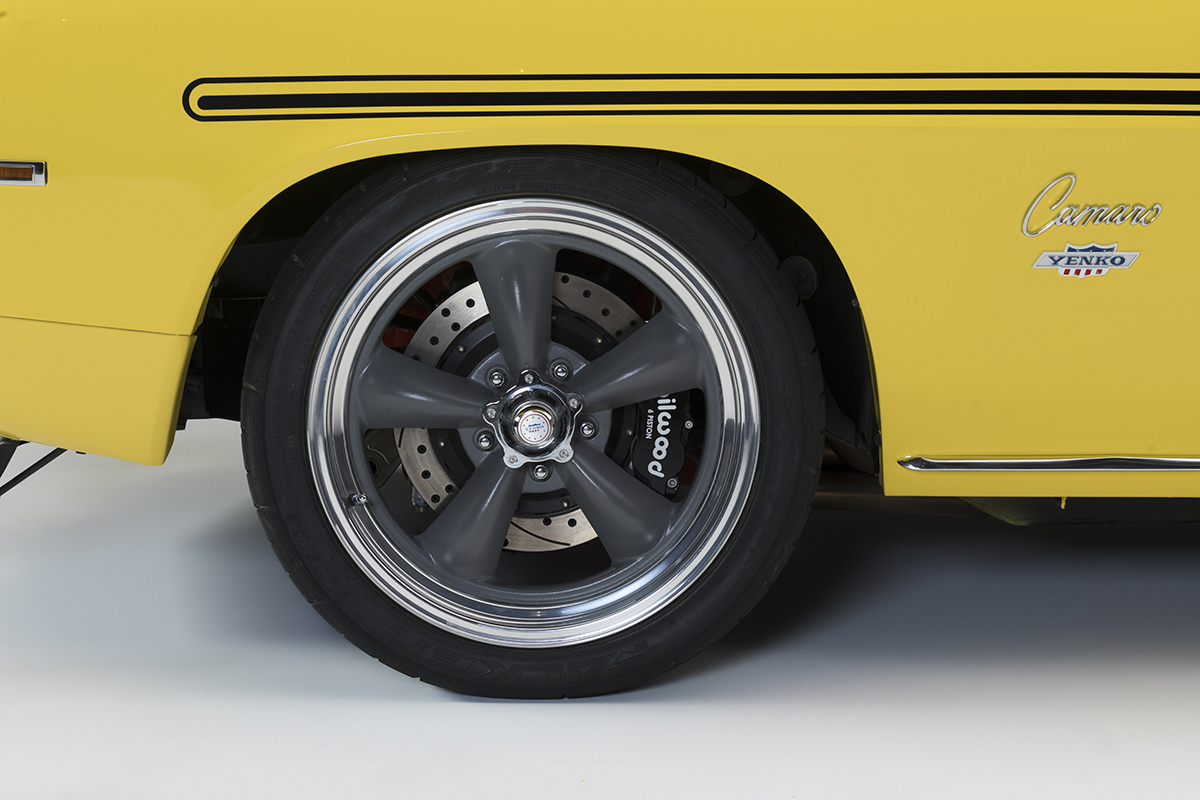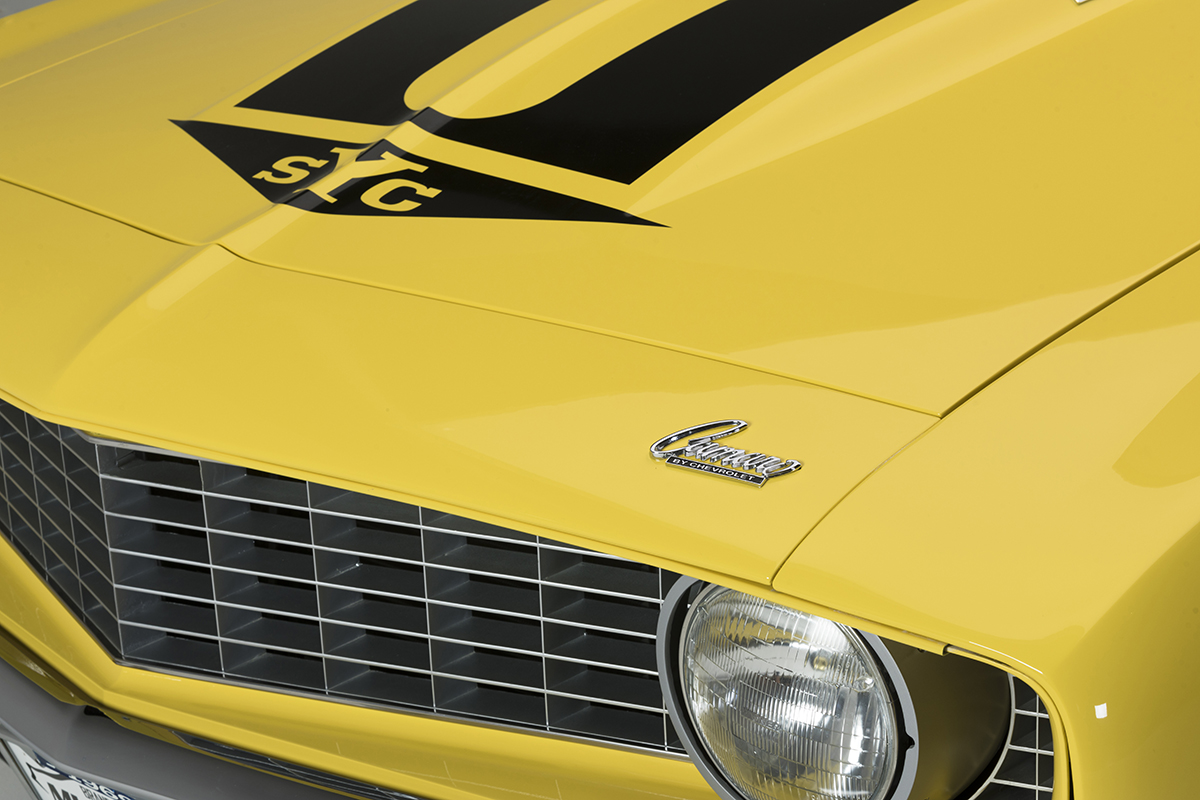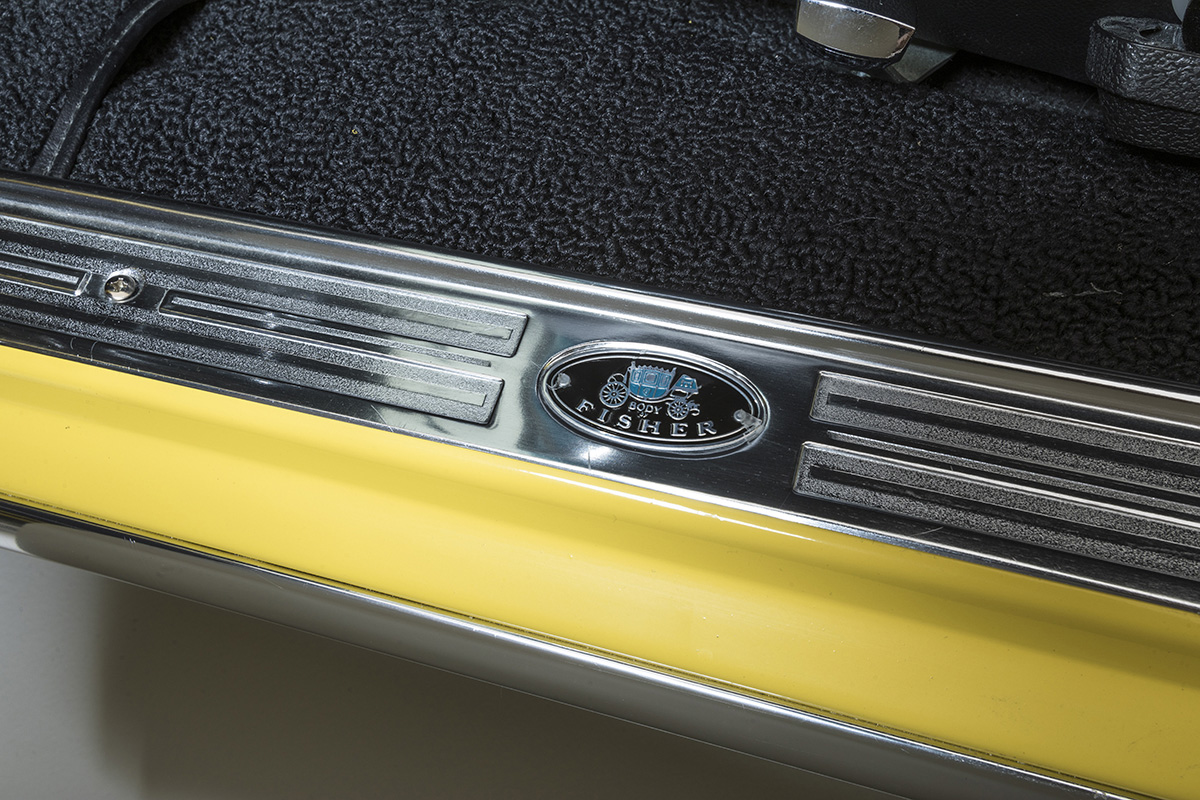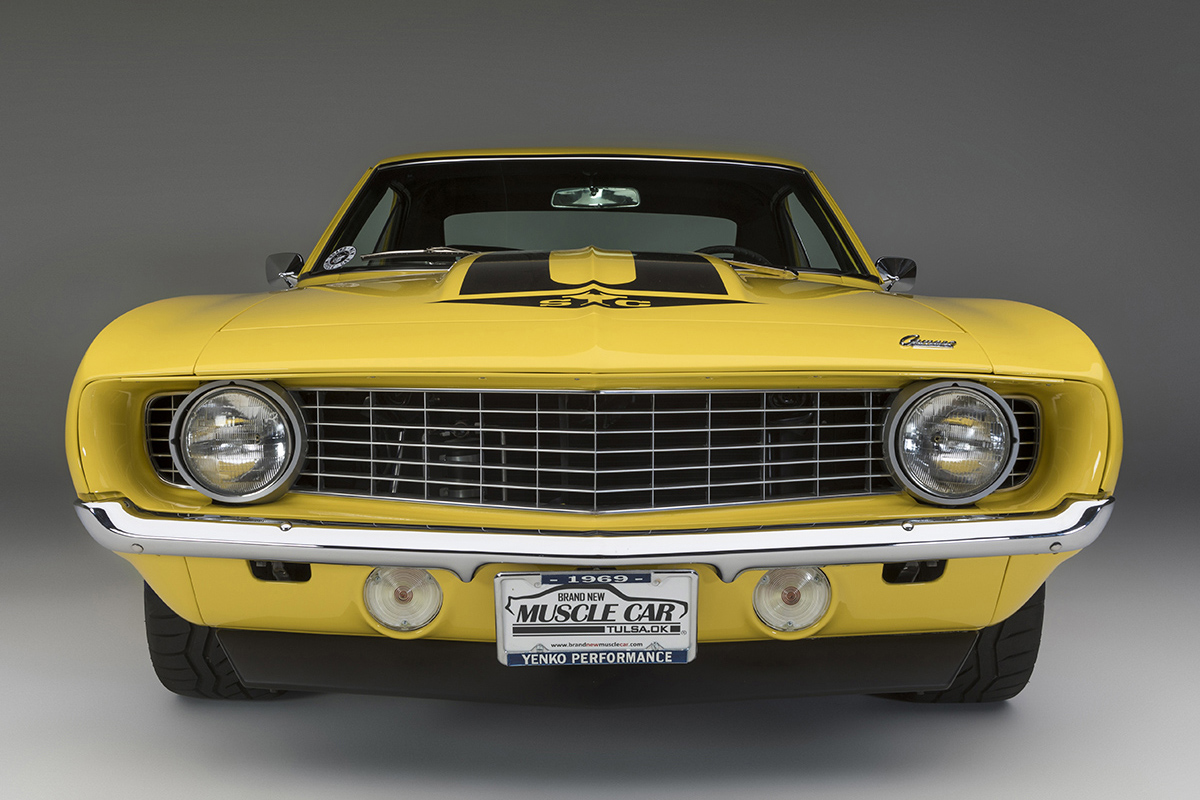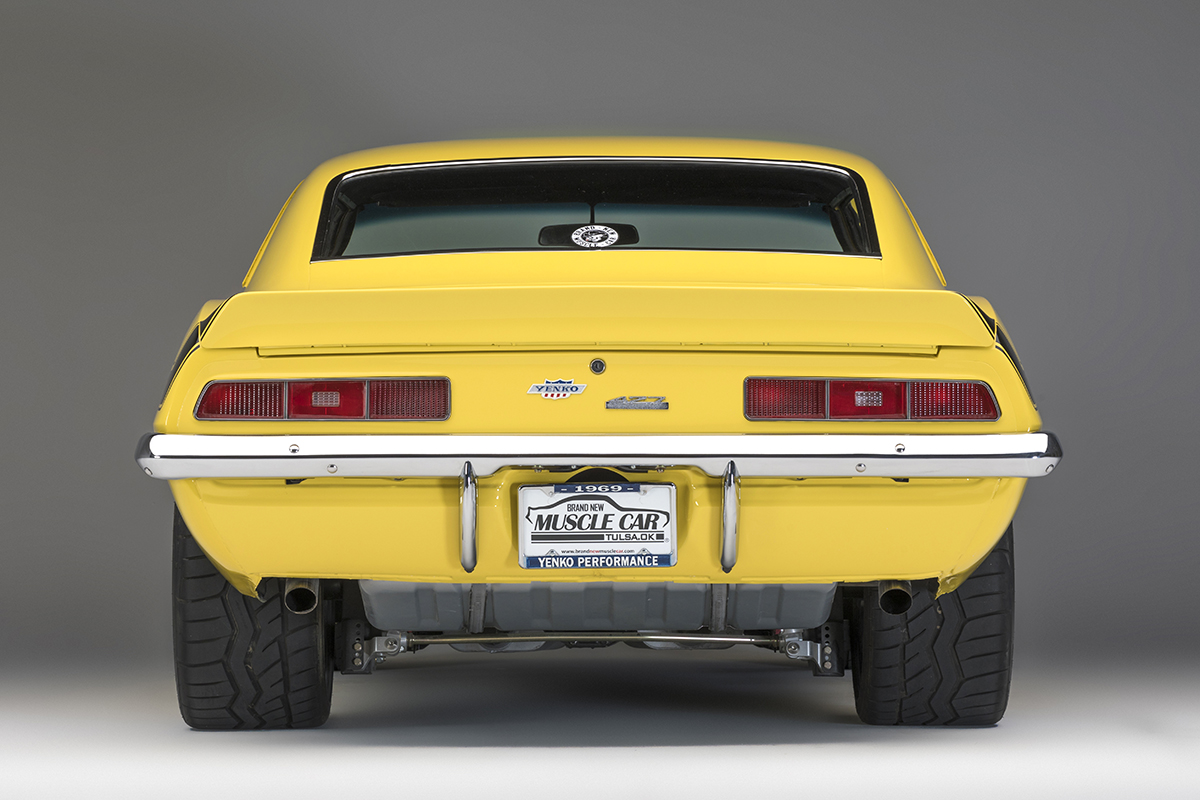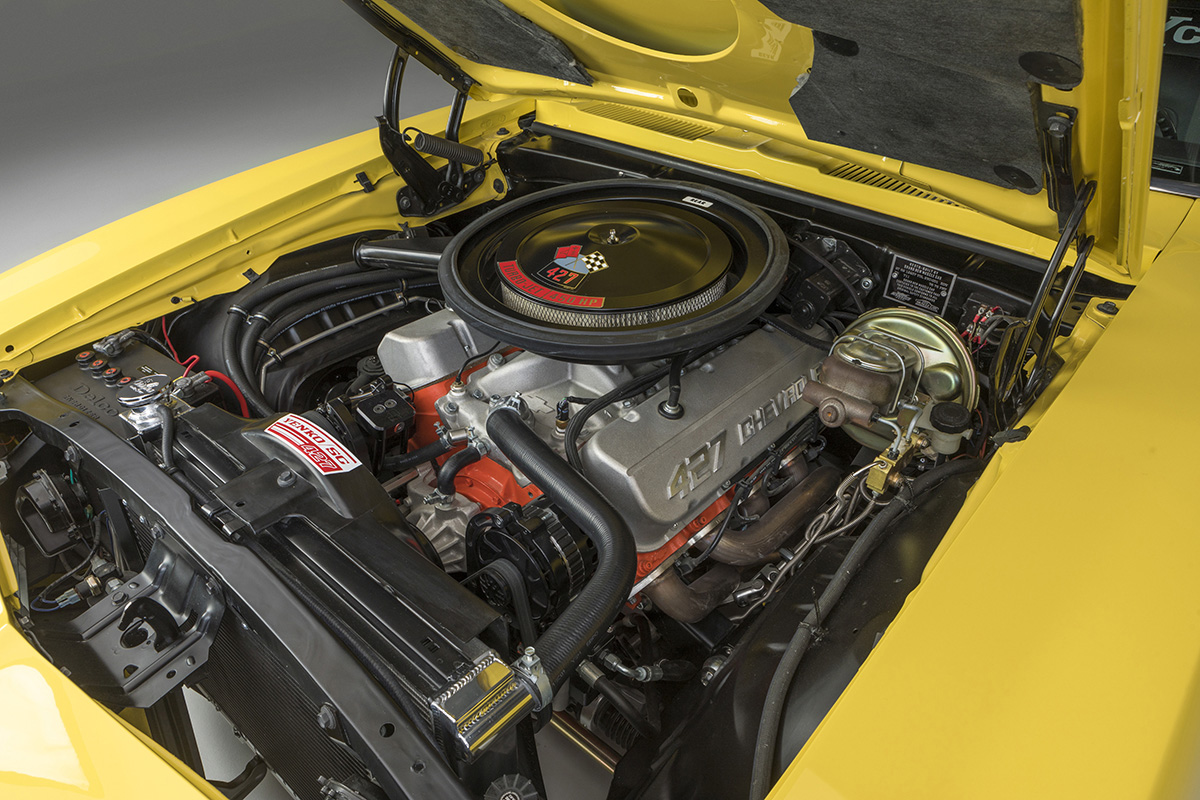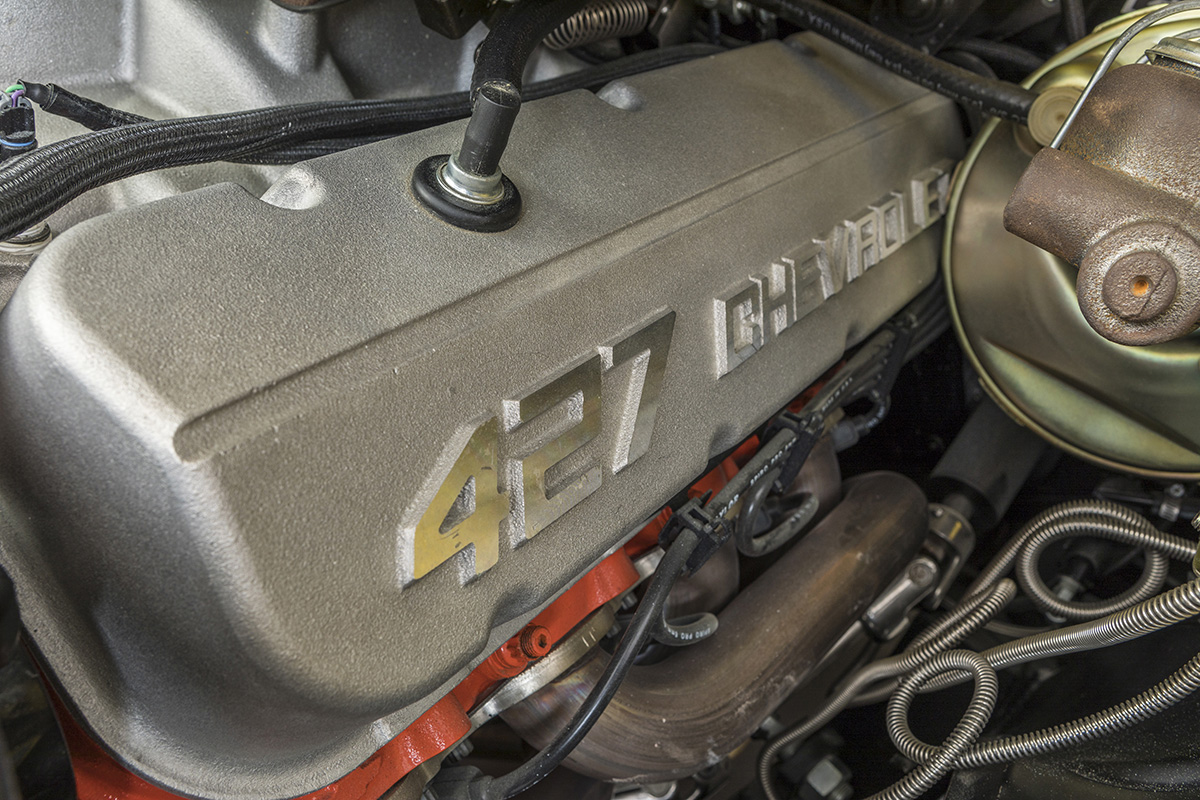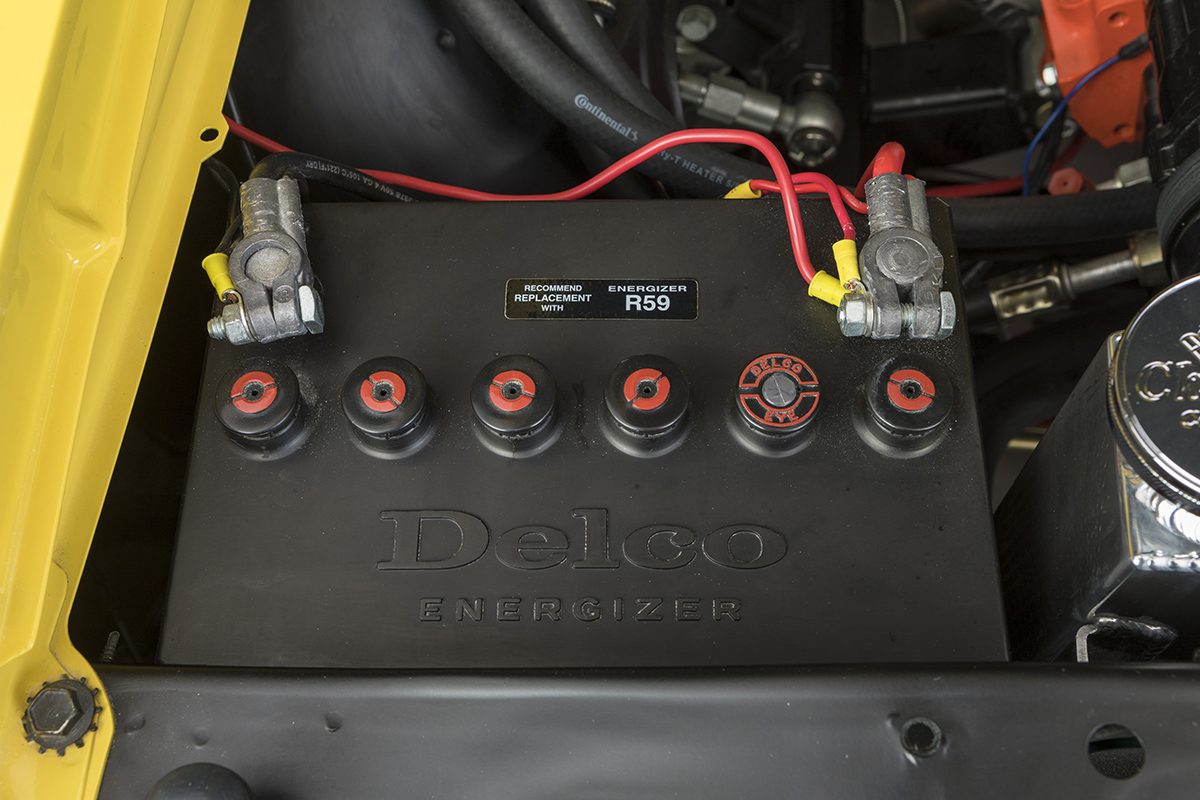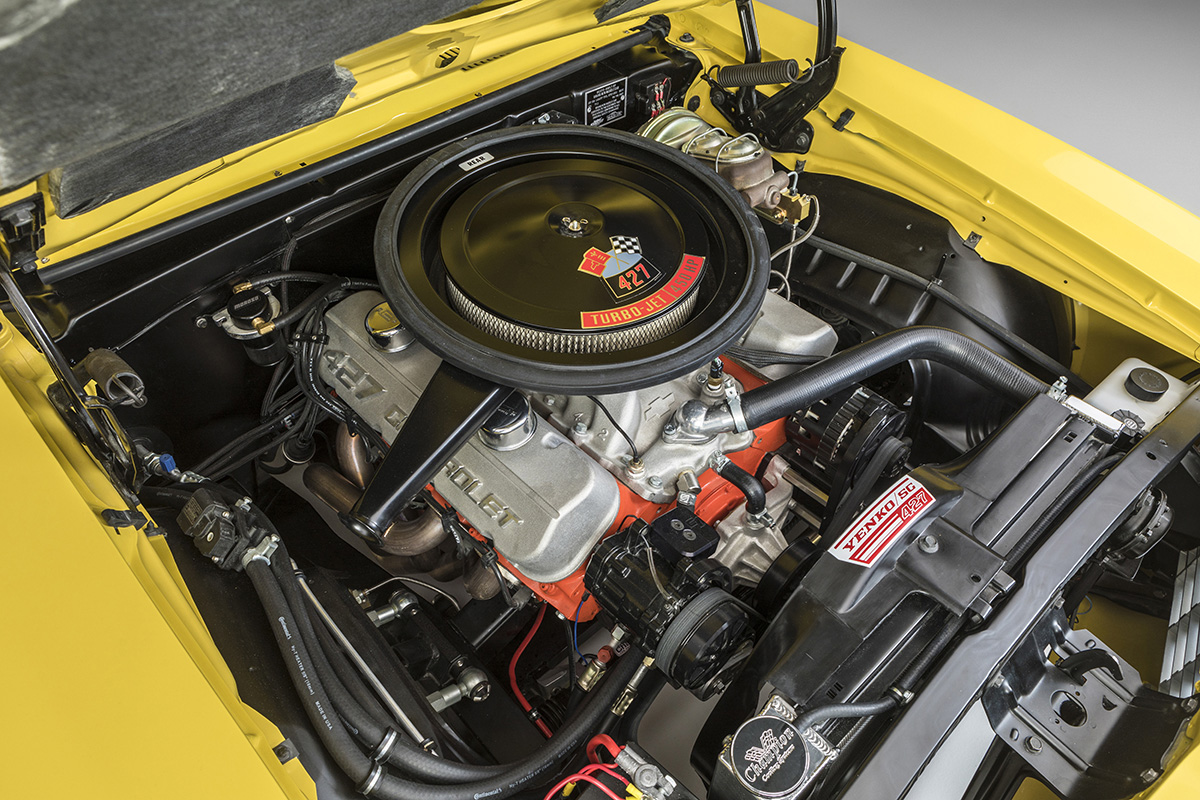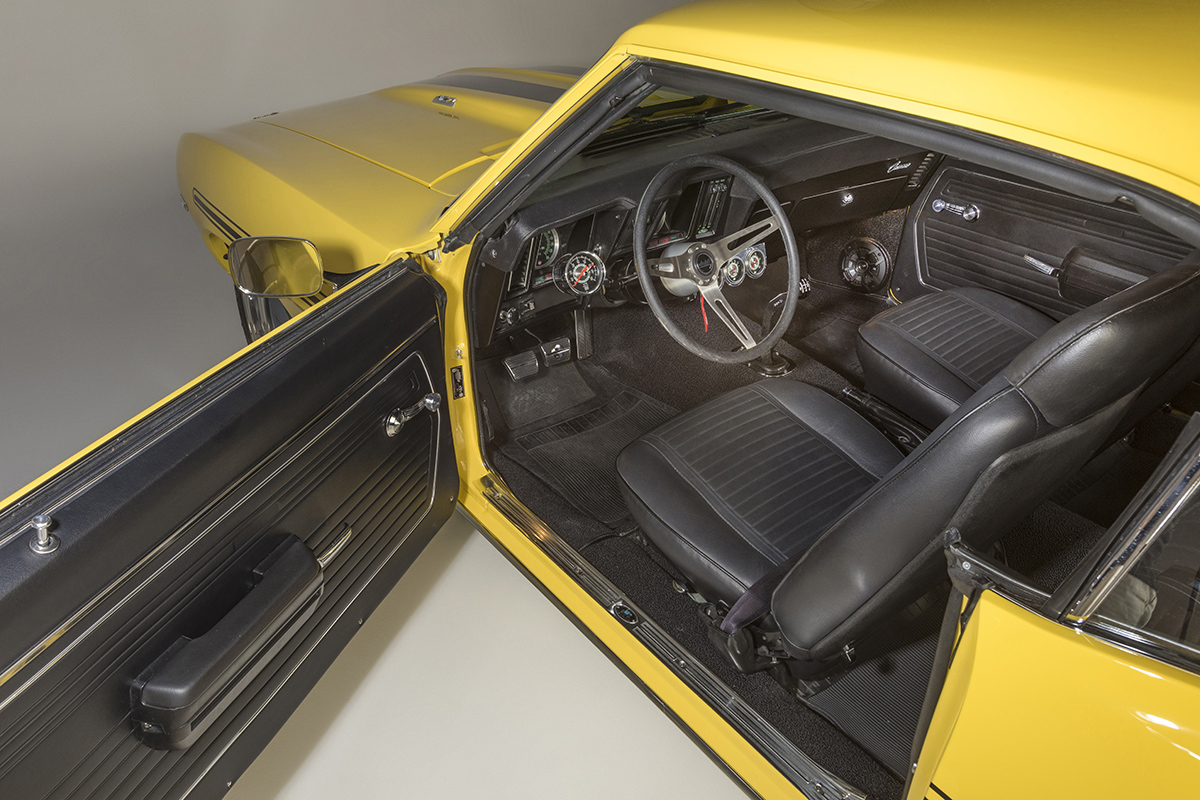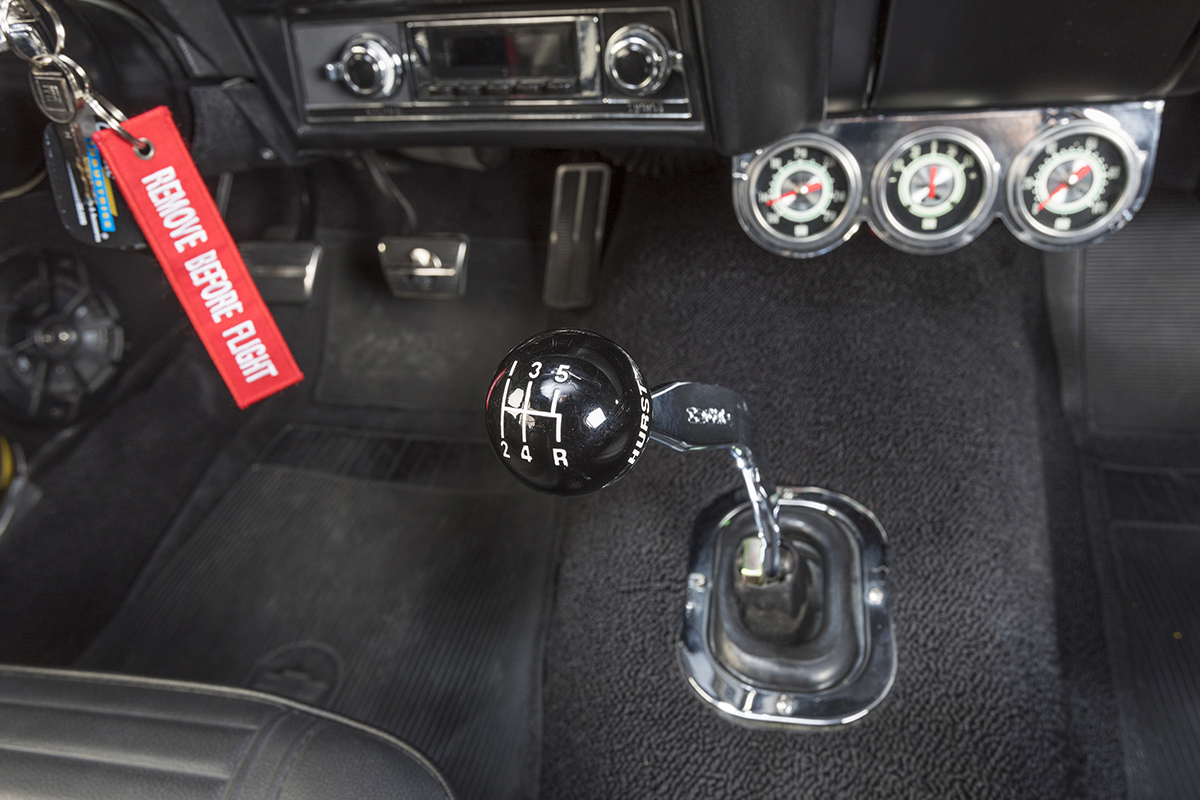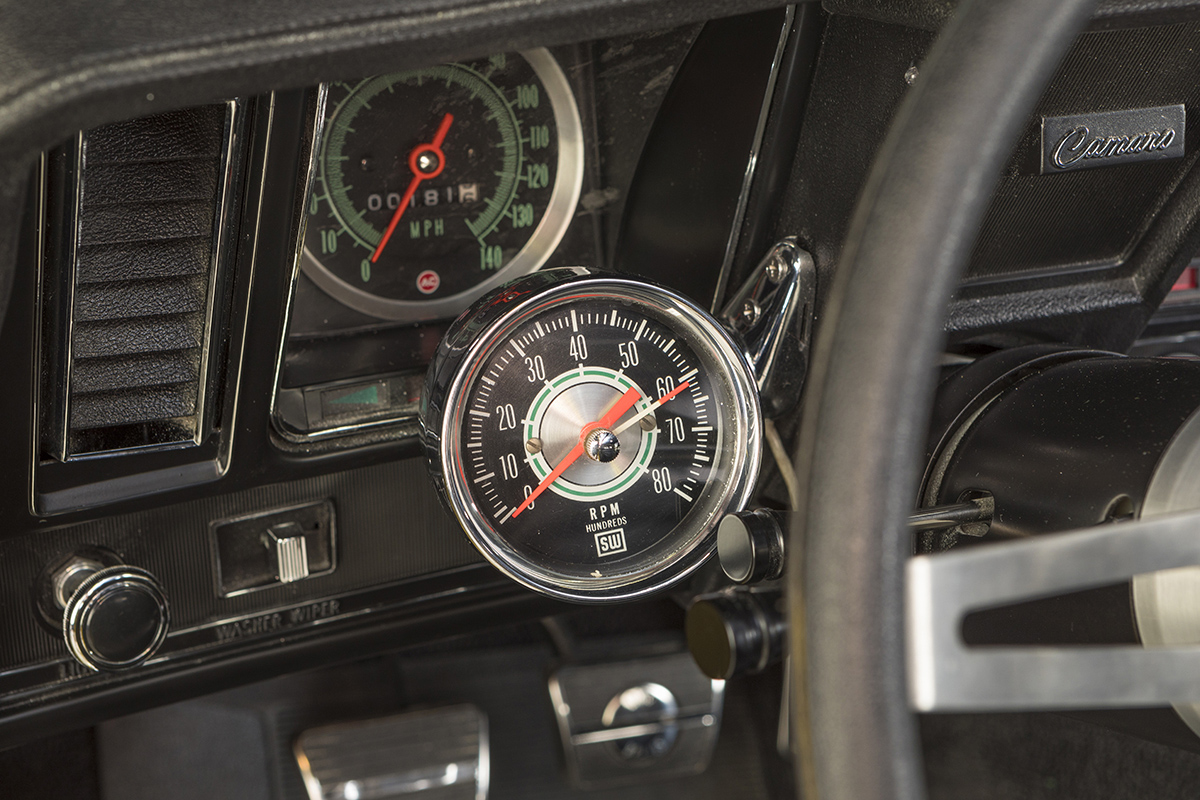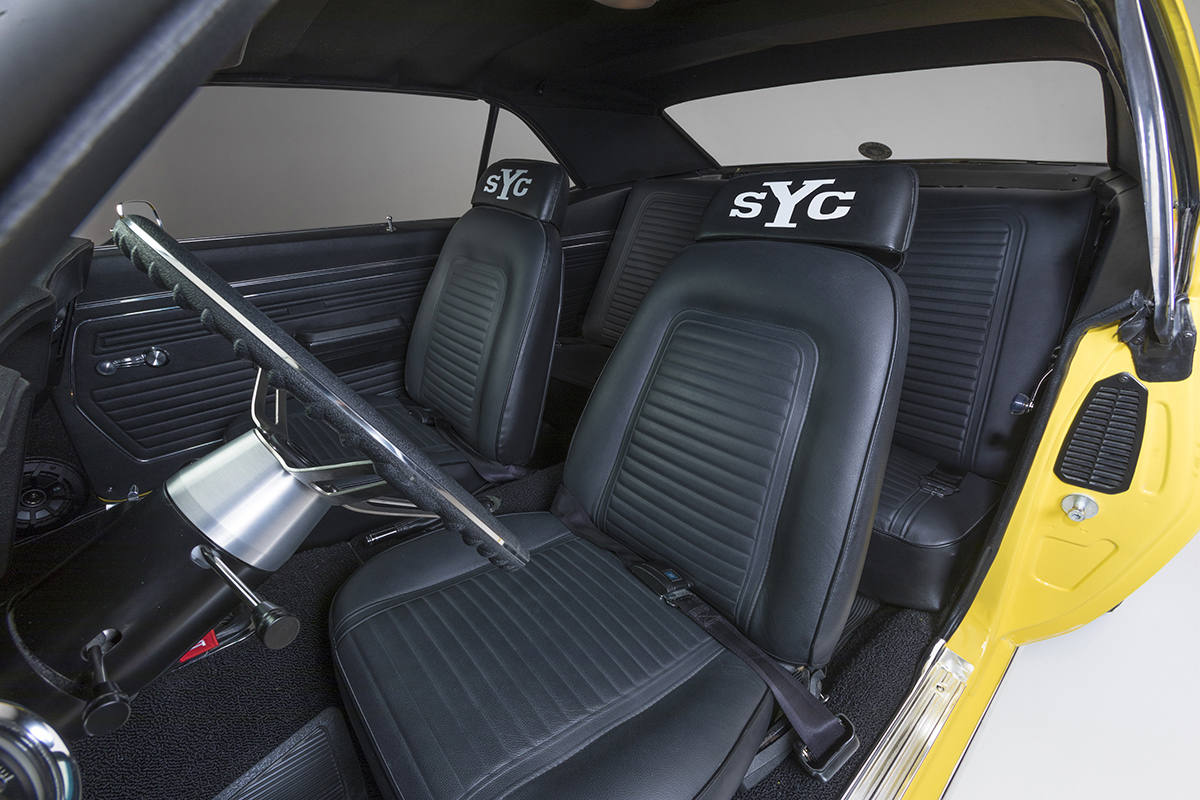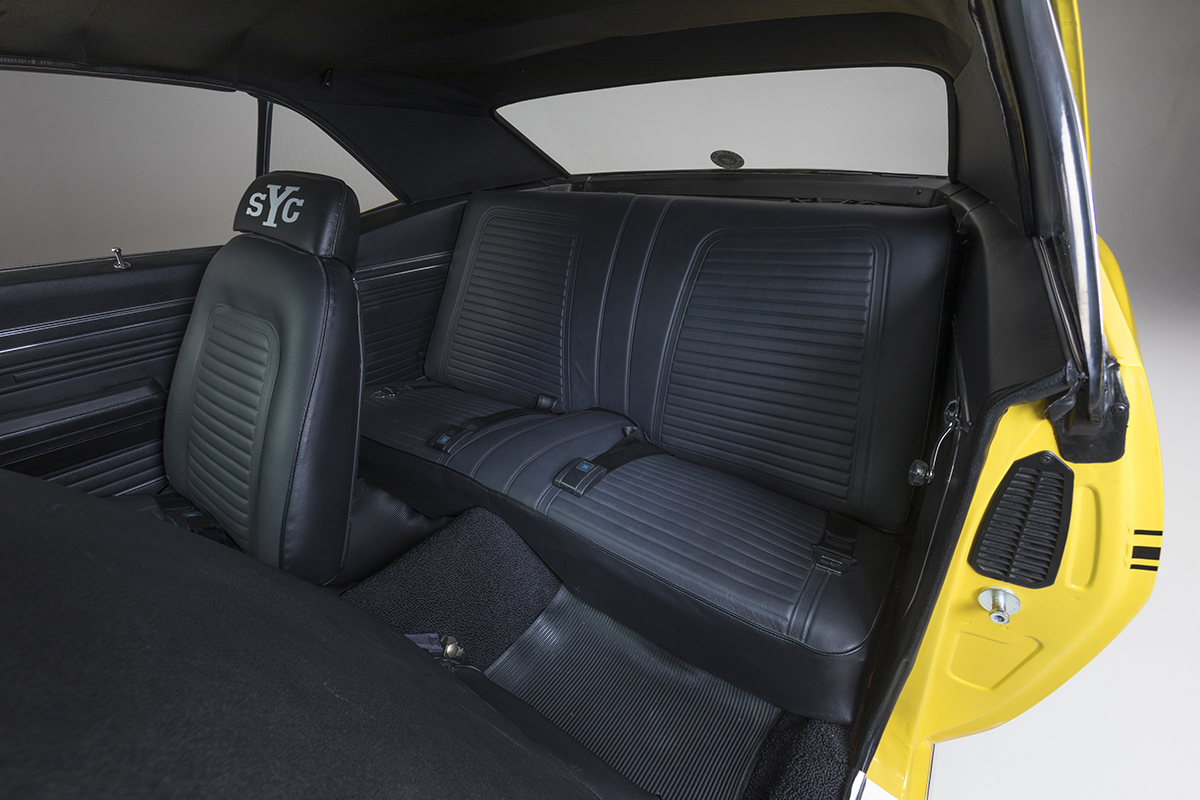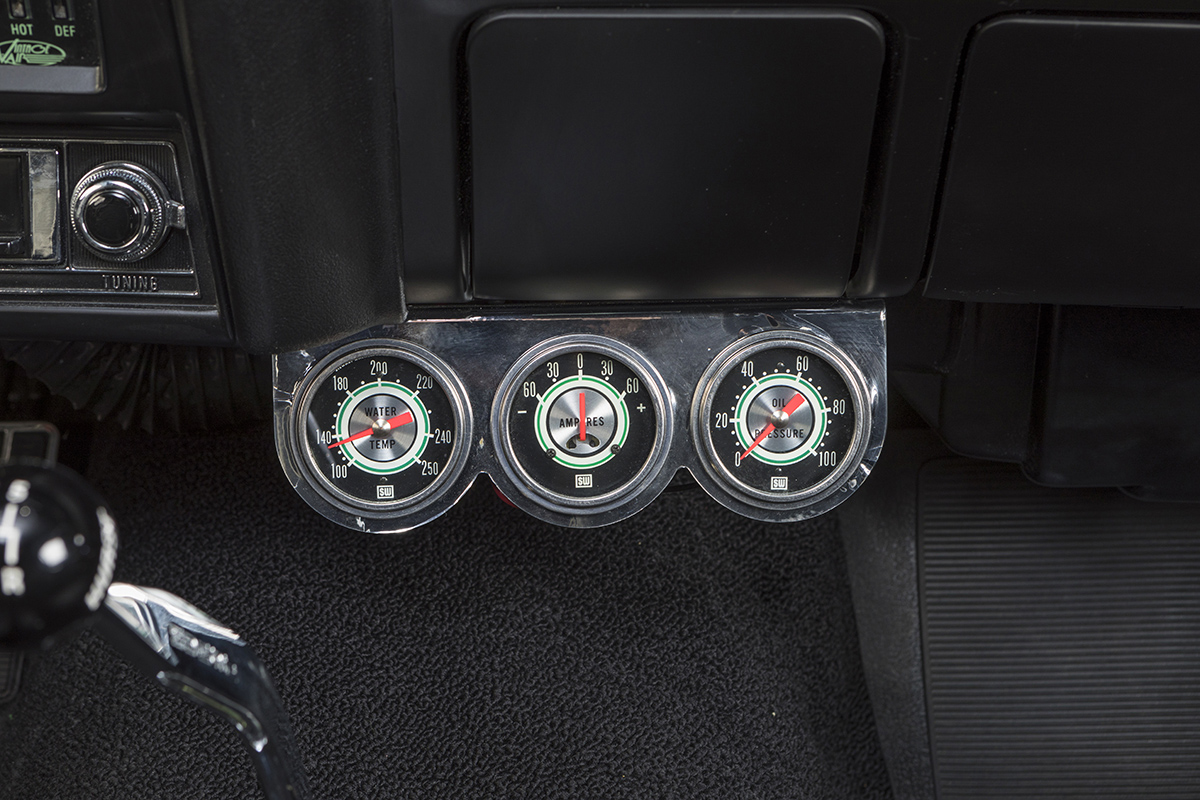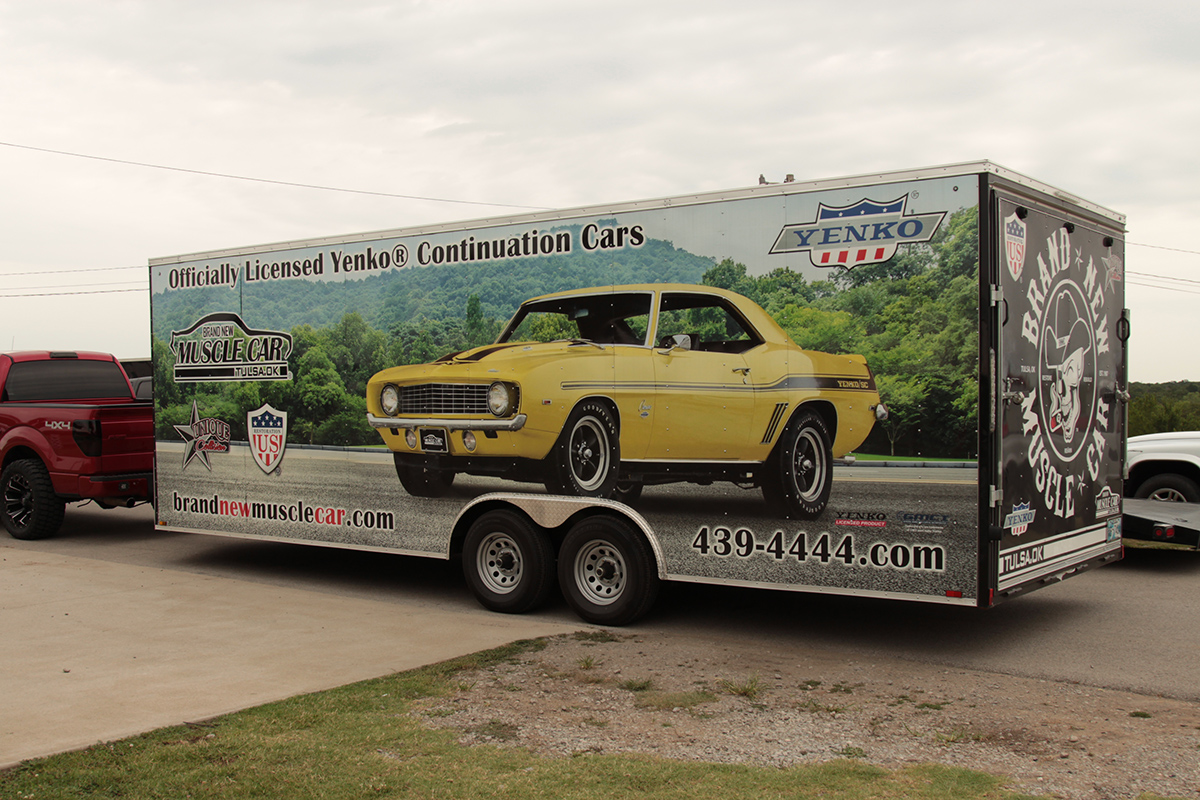One of the most recognized performance cars of the 1960s is the Yenko Chevrolet. Taking some cues from Carroll Shelby, Don Yenko wanted to build a road racing Chevrolet that was more competitive with the Mustang and the Cobra. His Corvettes were getting heavier, and he had jokingly stated that he was tired of seeing the rear bumper of Mark Donohue’s Mustang.
The family business was the automobile dealership, and Yenko’s Chevrolet dealership begin in 1934, with a second dealership opening in 1949 in Canonsburg, Pennsylvania. It was this location that the Yenko Chevrolet “Super Car” came to life.
Although Yenko was primarily known for the Camaro and Nova – cars that can fetch $250,000 – it was a very different car that was the first to carry the Yenko name. Yenko chose to race the Corvair Corsa because it was about 500 pounds lighter than the Corvettes he was racing, and he called it the Yenko Stinger.
He wasn’t able to race the car until late 1965, because one of the rules for D Production racing was to build 100 cars. So Yenko ordered Corvair Corsas from Chevrolet and he and his staff built all 100 Yenko Stingers in a two week time period.
While racing the Stinger was successful, when the Camaro was introduced in 1967 Yenko decided to get into A Sedan and Trans Am racing. But the early Camaros were limited to the small-block, and Yenko wanted more power. So he hired some professionals to help him shoehorn the 427ci big-block between the rails.
By late 1967, the 396ci was offered in the Camaro, but because the factory put a limit of 400ci in intermediate and compact cars Yenko could not order them with his 427. Externally, they were the same dimensions, so by 1968 he established a COPO (Central Office Production Order) ordering system for the Camaros that he was going to build.
Dozens of COPO 9737 Chevrolet Camaros were ordered for the 1968 model year, and the factory L78 396ci engine was removed to drop in the L72 427ci, which had about 75 horsepower more than its predecessor at 450 horsepower.
By 1969, Yenko agreed to purchase 200 new Camaros through the COPO system, except they were much more significant because he convinced Chevrolet to install the L72 427ci at the factory. COPO 9561 identified the L72 engine with a cowl induction hood.
New COPO Camaros were ordered under COPO 9737, and delivered in 6 colors with 15×7 Rally Wheels, a 140-mph speedometer, and larger front anti-sway bars. In total, documents say that 198 Camaros were purchased by Yenko in Hugger Orange, Daytona Yellow, Rallye Green, Fathom Green, Le Mans Blue, and Olympic Gold.
With the success of the Yenko Stinger and Camaro sYc – which stands for Yenko Super Car – Yenko put his name on the Nova, Chevelle, and even the Vega – dubbed the Stinger II. The Vega was powered by a turbocharged 4-cylinder engine, but it wasn’t making it past EPA standards, so cars were sold without the turbo, which could be ordered through the dealership and installed later.
US Restorations Branches Out With Brand New Muscle Car
In Tulsa, Oklahoma, US Restorations was in the business of restoring and restifying classic musclecars. When Dynacorn released its first all-metal full-body replacement for the 1969 Camaro, US Restorations president, David Miller, II, started his gears turning and wondered: what if we could build yesterday’s muscle cars today?
If you could see where that was heading, then you know that Brand New Muscle Car was born as the “what if” division of US Restorations, and the previous concern about restorations – hidden rust and body damage – was now a thing of the past.
Brand New Muscle Car starts with a brand new, all-metal body and builds the ultimate dream car with all new components, and does so to the customer’s specifications. If you want the car to look just like it rolled off the assembly line in the 1960s – done. If you want a 1969 Camaro Z/28 with a modern LS7, upgraded suspension and modern handling attributes – done. The sky was the limit, and that’s what brought us to the Yenko Continuation Camaro, and Velocity TV.
The Officially Licensed Yenko Continuation Camaro
In addition to the question about building yesterday’s dream car today, what if that dream car was the Yenko Camaro? What if you wanted a Yenko Camaro, but you couldn’t find the exact car you wanted in the right color? And what if you wanted to build a driver – not buy a car that has become someone else’s trailer queen? Enter the Yenko Continuation Camaro.
After becoming the Officially Licensed Yenko Continuation Camaro, a television contract was signed and the very first Yenko Continuation Camaro was planned. Velocity Television would air the 13-part series, and Brand New Muscle Car would partner with several companies to build sYc-001. For this endeavor, Miller would partner with Martin Quintero, Dustin Jeffries, and Jerrad Baker to build the first new Yenko in 40 Years.
With a name like Yenko, it was an opportunity that Champion Cooling Systems couldn’t pass up. Miller was already familiar with our products, and having us become a sponsor and official supplier is a partnership that was already in the making. Champion supplied the all-aluminum, TIG welded radiator, a pair of electric cooling fans and a shroud, and other components to complete the build.
The show began with the full body from Dynacorn, and although it was a complete, all-metal body, it doesn’t mean that a coat of paint could be applied and call it a day. The crew spent hours working on the body – and adding a tub kit to make room for the wider tires. Seam sealer was applied, as were a few coats of primer, then some filler, another coat of primer, a coat of sealer, more work… you get the point. This car was destined to be immaculate.
Meanwhile, parts started accumulating for the build and the team at Brand New Muscle Car looked like they were having way too much fun. The episodes that aired over the weeks gave us a look into the camaraderie of the four partners and the rest of the crew. If you’ve ever been excited about receiving parts, then you can imagine what it would be like to get all the parts to build a brand spanking new 1969 Yenko Camaro in your own shop.
The front and rear suspension were supplied by Chris Alston’s Chassisworks, and that comprised of a g-Machine front clip with rack-and-pinion steering and coilover VariShocks. The rear of the car received the g-Link system, also with coilover VariShocks to help the car maintain a great stance and to slip around the track like it’s on rails.
Keeping the Camaro under control when it comes to braking, Wilwood multi-piston calipers at each corner was a great choice, and the black calipers are a good contrast to the period-correct looking American Racing Torque Thrust wheels.
Motivating the chassis to move out of its own way comes by way of a 427ci crate engine provided by Proformance Unlimited. By keeping true to the original Yenko Camaros, a big-block 427 was the only way to go, and the talented staff at Proformance put together a crate engine package that the new owner of sYc-001 can rely on.
Although keeping somewhat true to the original, this build was still receiving some custom parts to help modernize even the old big-block. A front drive system from Concept 1 was installed in a black anodized finish, and topping off the engine – taking place of a carburetor – is a new Holley Sniper EFI conversion system. Lighting the fires, you’ll find an MSD distributor and ignition, and backing up the engine, a Tremec TKO-600 transmission handles the shifting duties.
The combination will provide plenty of power, better fuel economy thanks to the Sniper, and air conditioning for those hot summer cruise nights. Pulling the spent fuel out of the big-block, a set of American Racing Headers with two-inch primaries gives the mill a throaty sound, quieted only slightly by a set of Flowmaster mufflers.
One of the major sponsors for this build was Classic Industries, who supplied many of the small parts needed all around the car like the trim, hood hinges, mouldings and lighting; and the big parts like the fenders, wheelwells, the radiator support, and the grille, to name a few.
Before laying down the carpet, Heatshield Products insulation was installed to keep the heat and road noise to a minimum – another modern feature that wasn’t readily available 50 years ago. As the carpet gets laid down and trimmed up, the interior starts coming together: seats got new leather upholstery, doors received brand new trim panels, and the new dash was installed with a brand new set of Stewart Warner gauges and all the creature comforts of a modern car, like a nice sound system and that air conditioning we mentioned earlier.
As part of the television show, we were invited out to Tulsa to see the first Yenko Continuation Camaro in person, and to hear that mill fire up. The car was taken around the track a few times, and later we were all treated to a barbecue dinner at Oklahoma Joes BBQ.
Our visit to Hallet Racing Circuit was the final episode, the final day, and the end of the project car build. We had a great time during the months that the build took place and will miss being a part of the team, but we know we made lots of new friends, reunited with some old friends, and the best part: we were part of the very first, Officially Licensed, Yenko Continuation Camaro build. That’s going to be a hard act to follow, but we’ll still try.

